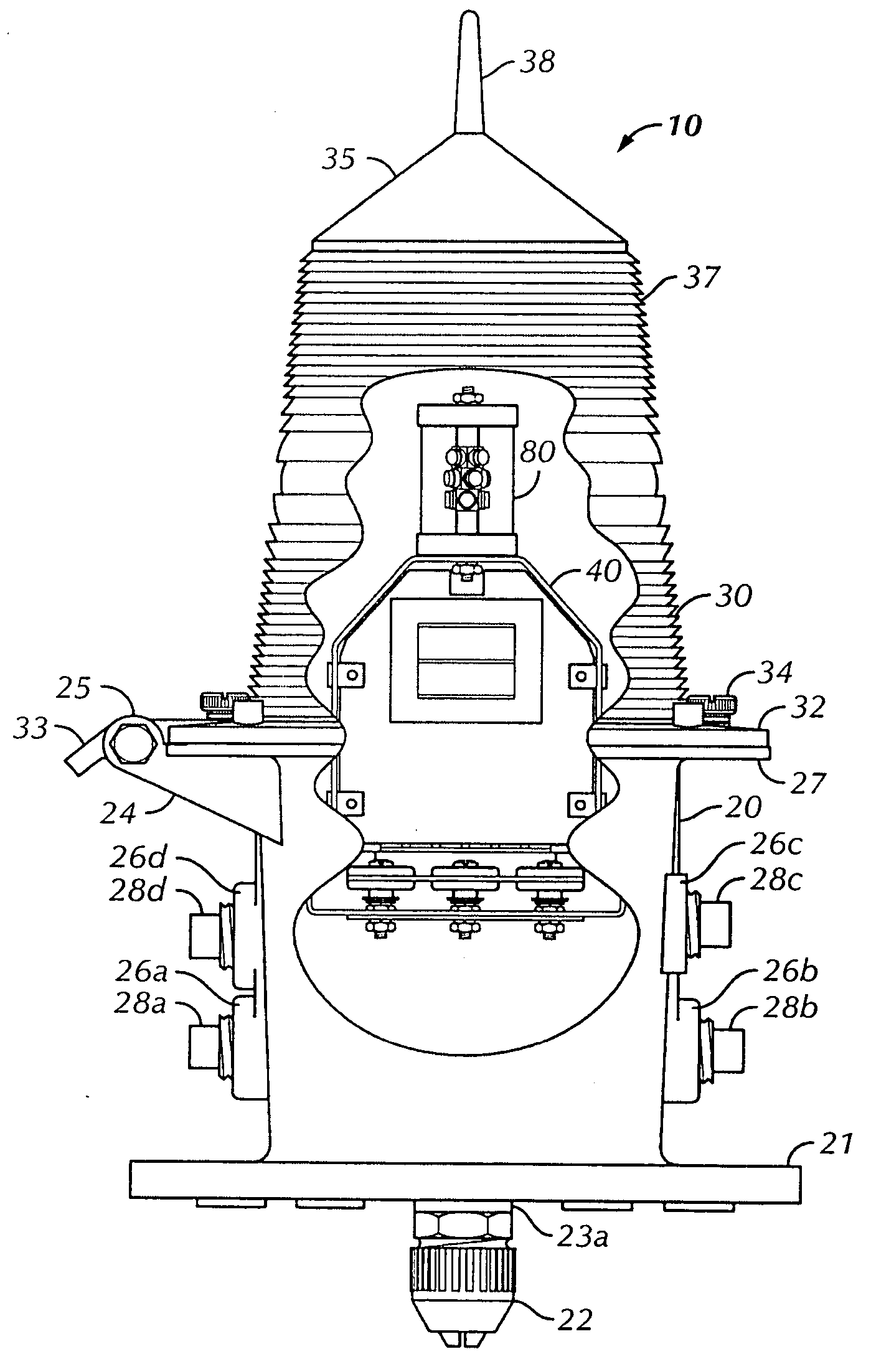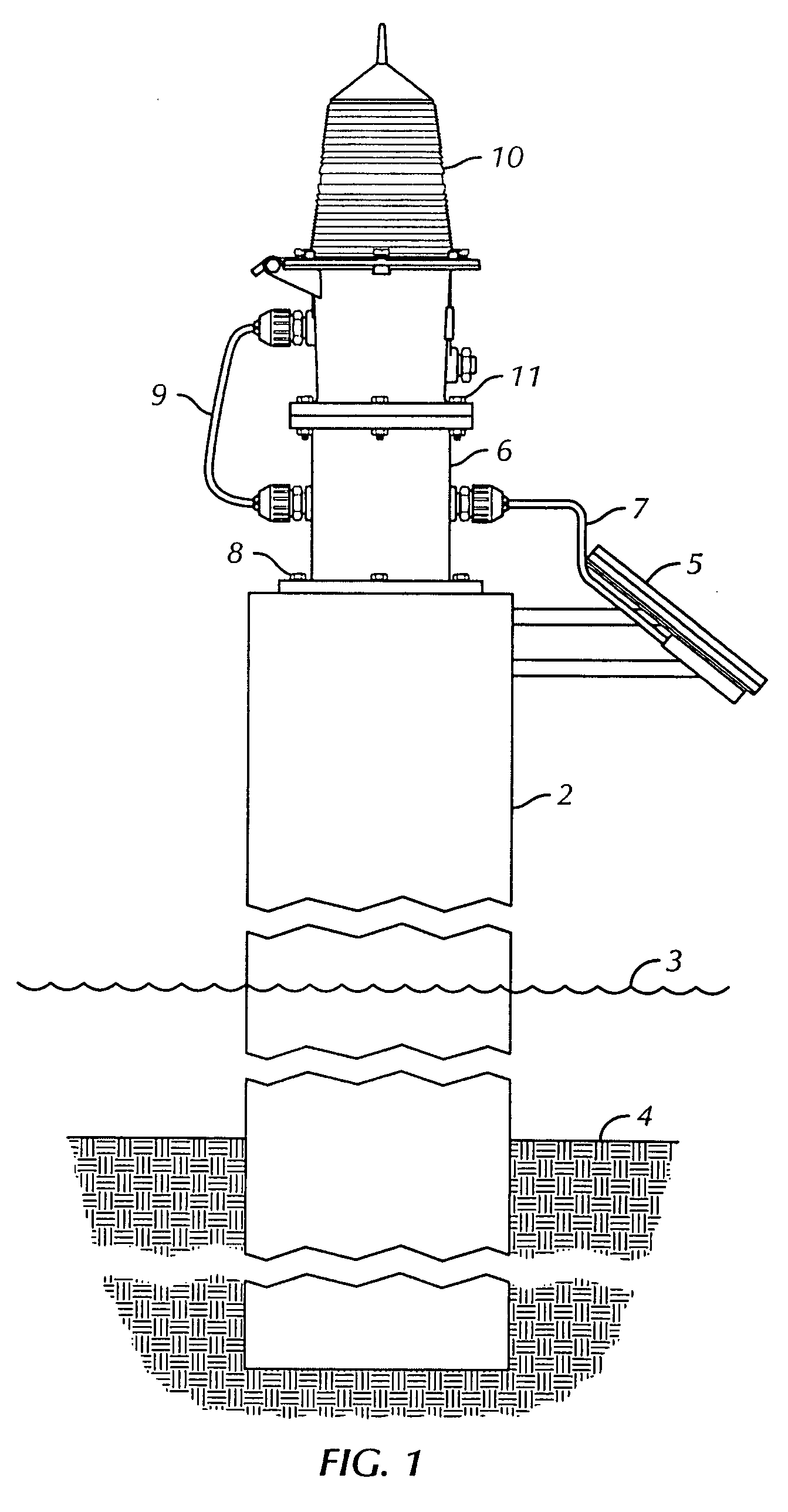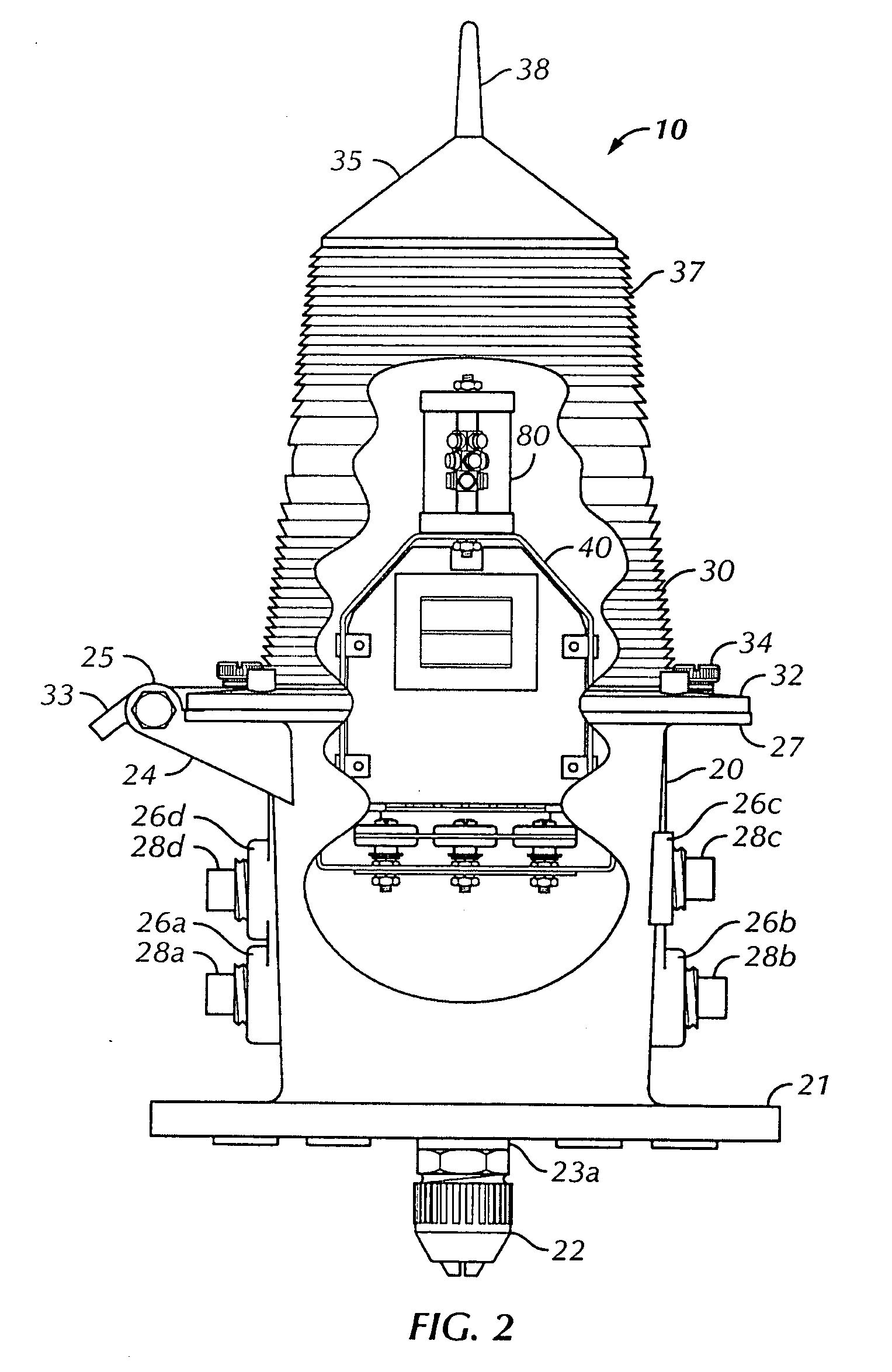LED lantern with fresnel lens
a technology of led lanterns and lens covers, which is applied in the direction of lighting support devices, lighting and heating apparatuses with built-in power, and with built-in power. it can solve the problems of low output 5 millimeters, high risk of damage, and low yield of leds
- Summary
- Abstract
- Description
- Claims
- Application Information
AI Technical Summary
Benefits of technology
Problems solved by technology
Method used
Image
Examples
first embodiment
[0071] Multiple embodiments of the LED source assembly are possible with four such embodiments described below. the LED source assembly 80, shown in the exploded view of FIG. 6, consists primarily of housing elements for the LED assembly 89 and the LED assembly itself. This embodiment is most suitable for use with one to two Watt high flux LED light sources, which generate less heat than the five Watt high flux LED sources. Generally when five Watt LEDs are used in this embodiment, a portion of the LEDs are driven at a lower power than the other LEDs to save energy and to allow an overall cooler operation of the LED source assembly as described in more detail below.
[0072] Bottom base 81a is a right circular disk having a central axial through hole and a concentric annular O-ring face seal groove 82a having a depth in excess of that necessary to properly house O-ring 83a on its upper surface. Base 81a also has an equispaced array of multiple primary vent holes 84 located on a first r...
second embodiment
[0113] Referring to FIGS. 22 and 23, the lighting device 400 is shown. This embodiment, which has its own either open- or closed-frame electrical power supply unit 470 for converting the input electric current, is configured to be mounted in a standard screw-in type socket base (not shown). The screw plug shell 410 is a substantially constant thickness thin walled modified cylindrical shell. Screw plug shell 410 has, from its upper end, a short straight right circular cylindrical segment, a downwardly extending roll-formed righthand thread compatible with one of the standard sizes of screw-in sockets, and a frustro-conical end which is reduced in diameter on its lower end. The major diameter of the thread is the same as the outer diameter of the upper segment, while the minor diameter is the same as the largest diameter of the frustro-conical lower end. The top end of screw plug shell 410 is open.
[0114] First input power wire 412 is insulated except on its lower and upper ends. Sold...
PUM
 Login to View More
Login to View More Abstract
Description
Claims
Application Information
 Login to View More
Login to View More - R&D
- Intellectual Property
- Life Sciences
- Materials
- Tech Scout
- Unparalleled Data Quality
- Higher Quality Content
- 60% Fewer Hallucinations
Browse by: Latest US Patents, China's latest patents, Technical Efficacy Thesaurus, Application Domain, Technology Topic, Popular Technical Reports.
© 2025 PatSnap. All rights reserved.Legal|Privacy policy|Modern Slavery Act Transparency Statement|Sitemap|About US| Contact US: help@patsnap.com



